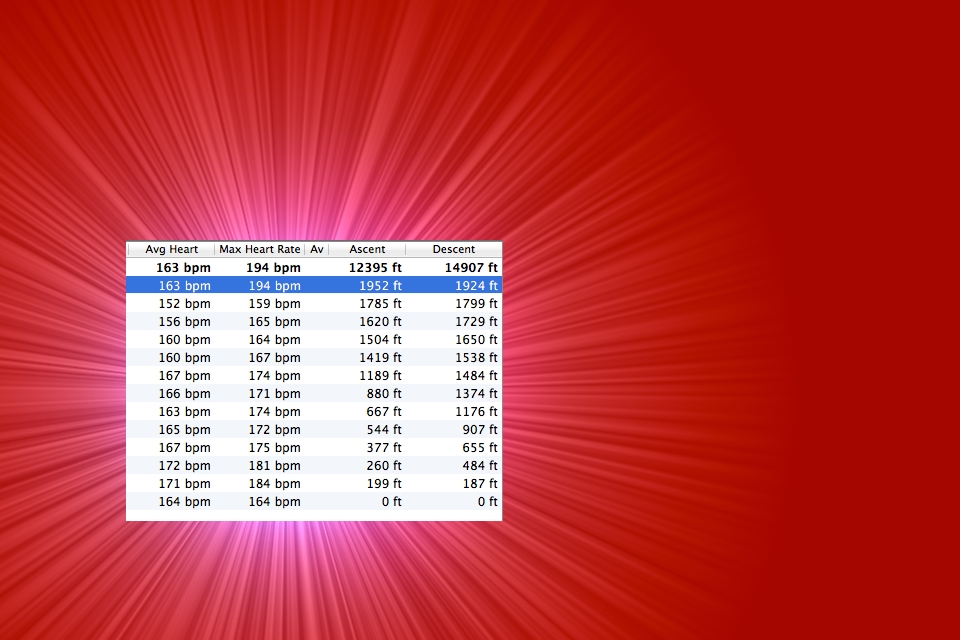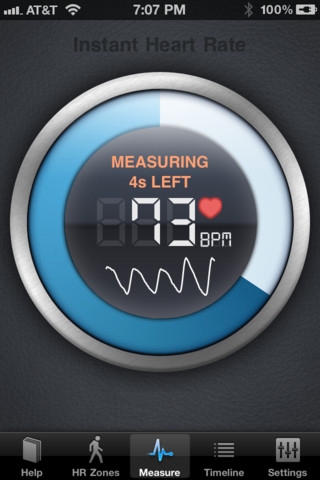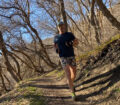An Understanding of Heart Rates
Athlete’s heart rates hit numbers that non-athlete’s heart rates might never, or should never, see, on both the low and high end of the spectrum.
Cardiologists and sports doctors agree that athletes can find their maximum heart rate by subtracting their age from 220. A 39-year-old woman’s maximum heart rate will be 181 with this formula.
Resting heart rate is the pulse rate of the heart when a person has been at rest for 30 minutes or longer. It’s easy to find the pulse on the wrist or throat, use an app on a smart phone, a heart rate monitor or EKG. Measuring your resting heart rate will provide information about your fitness level, how hard your heart is working to pump blood and oxygen through your system, and even if you’re training too hard.
A female endurance athlete can safely have a resting heart rate in the low 40’s or 50’s. A male endurance athlete’s heart rate might be even lower, in the mid-to-high 30’s at peak fitness.
The more fit the athlete, the more efficient the heart becomes at pumping blood and oxygen through the system. The heart will beat slower during times of moderate to intense activity. A 39-year-old woman with a resting heart rate of 47 can safely endure moderate to high levels of training with her heart beating in the 170-180 range. She won’t be able to speak more than a few words at a time, but she is not anaerobic yet.
When her heart spikes to 190-200 beats per minute levels at a frequent rate during normal training runs, her hands tingle and she feels queasy, or the heart rate won’t return to a normal resting heart rate when activity is over, it’s time to head to the doctor to see if there are underlying symptoms that need to be addressed.
An EKG is the first test the cardiologist will run. Assuming there are no big issues immediately, the test might say “Acute Sinus Bradycardia”. The doctor will consider the whole person, but an athlete might not worry too much about this diagnosis because Sinus Bradycardia essentially means a heart rate below 60 bpm. In a well-conditioned athlete, this is a good thing.
My Journey
During the Green Mountain Relay in Vermont a few weeks ago something strange happened during my first leg. It was 8 miles of rolling hills about 1000 feet lower in elevation than what I’m used to in Colorado. There was some heat and humidity, but nothing that should have been outside my wheelhouse.
During the run I felt my heart rate creep upwards into the lactic threshold zone and park. Even during the flat sections and downhills, I couldn’t get my heart rate to settle into a manageable rhythm that felt comfortable. The Garmin told me I was going at a Marathon Pace; nothing breathtaking, nothing unheard of, nothing out of the ordinary.
Except by mile 5 I was shot. Another hill loomed and I couldn’t catch my breath. I felt dizzy and light-headed. My heart was pounding and I couldn’t sustain the pace.
I walked the hill and resumed running on the flat and downhill, finishing the run in a decent but not epic time. Back at the van I cooled off in the backseat, drank electrolytes, refueled and waiting for the heart rate to settle down.
Periodically I checked my heart rate with the Azumio app on my iPhone. For the next 90 minutes the tingling in my arms and hands remained, and the app reported heart rates in the high 90’s to low 100’s. Even with hydration, fuel and rest, things weren’t settling down.
Then it was time to run again so I changed clothes and hit the pavement.
During a training run a few weeks later in CO on familiar stomping grounds I was surprised to see my heart rate bump into the 190 range. My Garmin beeped loud and long, telling me to slow it down.
I saw my doctor recently and due to the strange spikes in heart rate and a family history of heart issues, she suggested I get checked out by a cardiologist to rule out any underlying issues that might otherwise go undetected due to my fitness level.
At this point the EKG test says “Acute Sinus Bradycardia”, with a reading of 47 bpm. As an endurance athlete this reading is not abnormal. The doctor wants to run a few more tests and dig a little deeper into the structure of the heart, but at this point isn’t concerned about my exercise level.
To Be Continued….
References:
How to Calculate Your Resting Heart Rate http://www.livestrong.com/article/346393-how-to-calculate-a-regular-heart-rate/
Sinus Bradycardia
http://emedicine.medscape.com/article/760220-overview
EKG
http://www.webmd.com/heart-disease/electrocardiogram
Azumio App
http://itunes.apple.com/us/app/instant-heart-rate-heart-rate/id395042892?mt=8

















